In our ‘umble kitchen, we’re happy to make do with a Pure DMX-50 system and a rather ropey Citizen handheld colour TV, but for the hostess with the mostest who really wants to impress, the Philips DCD778 Docking Entertainment System could be just the thing.
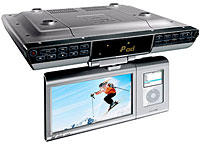 Designed to be fitted under a kitchen cabinet, the Philips DCD778 sports a flip down 8.5-inch widescreen LCD display with an iPod docking bay (compatible with fourth- and fifth-generation iPods, the iPod mini, and iPod nano).
Designed to be fitted under a kitchen cabinet, the Philips DCD778 sports a flip down 8.5-inch widescreen LCD display with an iPod docking bay (compatible with fourth- and fifth-generation iPods, the iPod mini, and iPod nano).
With the iPod safely slipped in, users can play back audio and video files, or fire up the DVD player which supports DVD, (S)VCD, MP3-CD, CD(RW) and Picture CD.
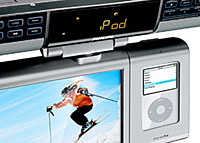 For a bit of Jonathan Ross while you create your Master Chef-challenging creations, there’s a digital AM/FM tuner onboard as well as a cooking timer and clock, and wireless remote.
For a bit of Jonathan Ross while you create your Master Chef-challenging creations, there’s a digital AM/FM tuner onboard as well as a cooking timer and clock, and wireless remote.
TV viewing options come in the shape of an ATSC/NTSC TV tuner, with the sound being played back via the built-in stereo 2-inch speakers.
Although we’re definitely down with the technical wizardry, we have to say that the Philips doesn’t really sizzle our bangers when it comes to looks, and we suspect that it wouldn’t be long before the thing’s high end looks soon got marred with greasy finger marks and bits of (veggie) sausage fat.
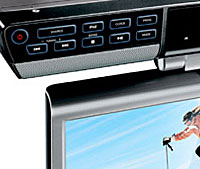 The Philips DCD778 Docking Entertainment System is expected to start shipping in the US next week for around $400, although there’s no news on a UK release.
The Philips DCD778 Docking Entertainment System is expected to start shipping in the US next week for around $400, although there’s no news on a UK release.
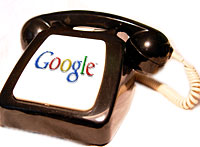 Rumours that Google is working on a mobile phone were given another boost after Richard Windsor, of Nomura brokers, claimed that Google reps at an industry event in Germany had blabbed about such a device.
Rumours that Google is working on a mobile phone were given another boost after Richard Windsor, of Nomura brokers, claimed that Google reps at an industry event in Germany had blabbed about such a device.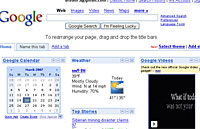 Pundits reckon that Google would be most likely to shuffle into the mobile world under a deal that would let them partner with an existing handset maker and hop on to the network of an existing mobile operator.
Pundits reckon that Google would be most likely to shuffle into the mobile world under a deal that would let them partner with an existing handset maker and hop on to the network of an existing mobile operator.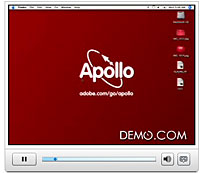 Adobe has released an alpha version of an interesting piece of software tasked with “bridging the gap between the computer desktop and the Web.”
Adobe has released an alpha version of an interesting piece of software tasked with “bridging the gap between the computer desktop and the Web.”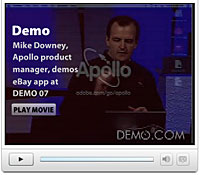 “Web browsers are great for reading Web pages,” said Lynch. “For Web applications, it’s really been a stretch to support things like word processors or e-mail,” he added.
“Web browsers are great for reading Web pages,” said Lynch. “For Web applications, it’s really been a stretch to support things like word processors or e-mail,” he added.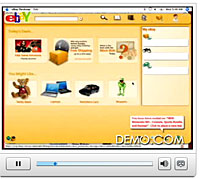 For maximum compatibility, Apollo supports existing web application technologies such as HTML, JavaScript and Flash and will, for example, let users place bids, maintain watch lists and post new items for sale on eBay straight from the desktop.
For maximum compatibility, Apollo supports existing web application technologies such as HTML, JavaScript and Flash and will, for example, let users place bids, maintain watch lists and post new items for sale on eBay straight from the desktop. Although it’s not the first time that a USB stick has been used to release a pop single – last October the soporific Keane released copies of “Nothing’s In My Way” on the same format, and managed to sell out stocks in a day.
Although it’s not the first time that a USB stick has been used to release a pop single – last October the soporific Keane released copies of “Nothing’s In My Way” on the same format, and managed to sell out stocks in a day. “If demand really does start to take off, it may well become viable to think about releasing selective albums on USB as well, especially if they were to become eligible for inclusion in the chart,” he added.
“If demand really does start to take off, it may well become viable to think about releasing selective albums on USB as well, especially if they were to become eligible for inclusion in the chart,” he added. The security bigwigs reported that more than six million bot-infected computers were detected during the second half of 2006, with over a third of all computer attacks originating from US-based PCs.
The security bigwigs reported that more than six million bot-infected computers were detected during the second half of 2006, with over a third of all computer attacks originating from US-based PCs. The company also noted that ‘underground economy servers’ were being being used by dodgy perps to flog stolen personal information, including credit cards, bank cards, PIN numbers and other forms of ID.
The company also noted that ‘underground economy servers’ were being being used by dodgy perps to flog stolen personal information, including credit cards, bank cards, PIN numbers and other forms of ID. Try as we might, we can’t think of the last time we said to ourselves, “You know what? We could really use a Bluetooth enabled cushion,” but the good news is that if ever such a thought should cross our minds, urbantool.com has the answer.
Try as we might, we can’t think of the last time we said to ourselves, “You know what? We could really use a Bluetooth enabled cushion,” but the good news is that if ever such a thought should cross our minds, urbantool.com has the answer.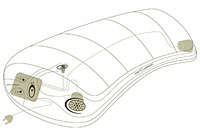 Powered by a rechargeable lithium ionic battery, call status is displayed via a series of LEDs, which indicate if the, err, pillow is in active standby mode or taking an incoming call.
Powered by a rechargeable lithium ionic battery, call status is displayed via a series of LEDs, which indicate if the, err, pillow is in active standby mode or taking an incoming call. Although we couldn’t argue with anyone claiming that it’s the most comfortable phone on the planet, the idea of someone actually sitting at home talking into a cushion would suggest the presence of magic mushrooms to us.
Although we couldn’t argue with anyone claiming that it’s the most comfortable phone on the planet, the idea of someone actually sitting at home talking into a cushion would suggest the presence of magic mushrooms to us.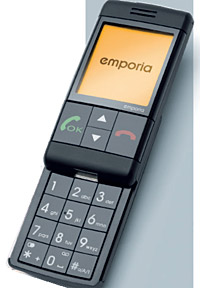 On display at the CeBit hi-tech fair last week was a new mobile phone offering a built-in emergency button.
On display at the CeBit hi-tech fair last week was a new mobile phone offering a built-in emergency button. The phone comes with extra loud volume options for speaker and ring tones and has a powerful vibration alert to ensure the owner knows that someone’s calling.
The phone comes with extra loud volume options for speaker and ring tones and has a powerful vibration alert to ensure the owner knows that someone’s calling.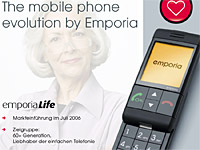 There seems to be some debate about just how old the target market actually is: the
There seems to be some debate about just how old the target market actually is: the  WebEx is listed on the NASDAQ (WEBX) and is reported to be the leader in its field. They offer a ton of different products, all based around sharing information between a number of remote parties, with the majority of them featuring shared video.
WebEx is listed on the NASDAQ (WEBX) and is reported to be the leader in its field. They offer a ton of different products, all based around sharing information between a number of remote parties, with the majority of them featuring shared video. Her guidance to them is to settle on DVB-H (Digital Video Broadcasting for Handhelds), a European led development of the DVB-T (Television) standard that is throughout large areas of Europe.
Her guidance to them is to settle on DVB-H (Digital Video Broadcasting for Handhelds), a European led development of the DVB-T (Television) standard that is throughout large areas of Europe. Despite a
Despite a  HDForAll are a pressure group made up of TV manufacturers, retailers and public service broadcasters including DSGI, Samsung, Sony and Toshiba and BBC, ITV, Channel 4 and Five. They’re keen to remind people that there’s only a limited amount of time left to contact Ofcom to make their views known on auctioning off spectrum to the highest bidder. Background on this and how to respond are available on
HDForAll are a pressure group made up of TV manufacturers, retailers and public service broadcasters including DSGI, Samsung, Sony and Toshiba and BBC, ITV, Channel 4 and Five. They’re keen to remind people that there’s only a limited amount of time left to contact Ofcom to make their views known on auctioning off spectrum to the highest bidder. Background on this and how to respond are available on